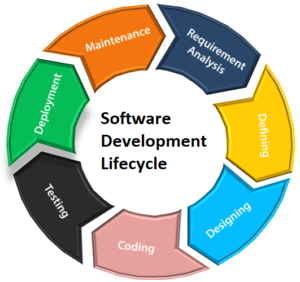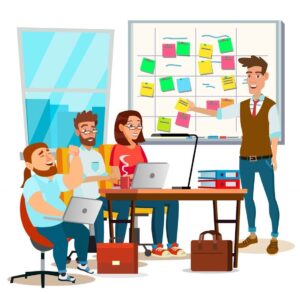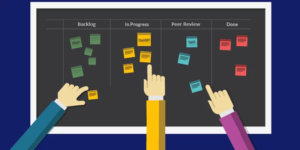 The Software Development Lifecycle is a process used by the software industry to design, develop, and test high-quality software. It aims to produce high-quality software that meets or exceeds customer expectations reaches completion within times and cost estimates. As shown in the diagram, the process splits into different stages:
The Software Development Lifecycle is a process used by the software industry to design, develop, and test high-quality software. It aims to produce high-quality software that meets or exceeds customer expectations reaches completion within times and cost estimates. As shown in the diagram, the process splits into different stages:
- Requirement Analysis
- Defining requirements
- Designing architecture
- Building and Developing
- Testing the Product
- Deployment on the Web
- Maintenance
 Requirement Analysis
Requirement Analysis
The senior members of the team use information from the customer. This information is then used to plan the basic project approach and to conduct a product feasibility study in the economical, operational, and technical areas.
- Defining requirements
Then the team should clearly define and document the product requirements and get them approved by the customer or the market analysts.

- Designing architecture
A design approach clearly defines all the modules of the product along with its communication and data flow representation. The internal design should be clearly defined with even the minutest of the details.
- Building and Developing
In this stage, the actual development starts, and the product is built. If the design is performed in a detailed and organized manner, code generation can be accomplished without much hassle.

- Testing the Product.
In this stage, we test for defects and deficiencies. We fix those issues until the product meets the original specifications.
- Deployment on the Web
At this stage, the goal is to deploy the software so users can start using the product. However, many organizations choose to move the product through different deployment environments, such as a testing or staging environment.
- Maintenance
The final phase of the Software Development Lifecycle occurs after the product is in full operation. Maintenance can include software upgrades, repairs, and fixes if it breaks. Customers often demand new features for the software application, which the developing team needs to add.

The Software Development Lifecycle done right can allow the highest level of management control and documentation. Developers understand what they should build and why. All parties agree on the goal upfront and see a clear plan for arriving at that goal. Everyone understands the costs and resources required. The benefits of using it only exist if the plan is followed faithfully.
Lesson Topics
- Software Engineering
- Software Development Lifecycle (SDLC)



